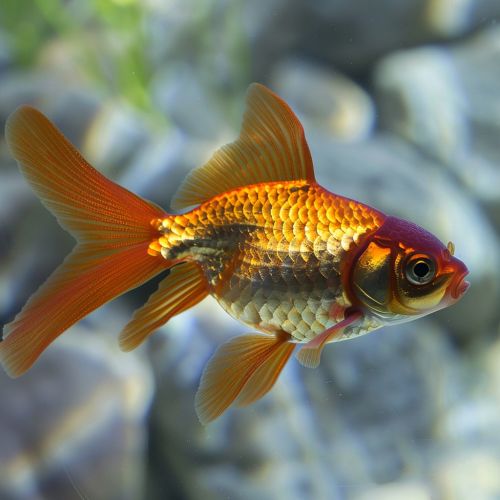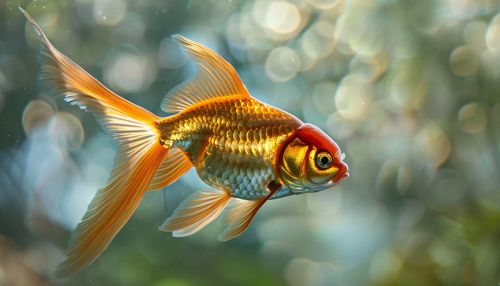Goldfish
Introduction
Goldfish (Carassius auratus) are a species of domesticated water-dwelling creatures, belonging to the family Cyprinidae. Originating from East Asia, these fish are one of the earliest species to be domesticated and are a common feature in ornamental water gardens and aquariums worldwide.
History
Goldfish were first domesticated in China over a thousand years ago, and were initially kept for their meat. Over time, however, people began to breed them for their ornamental value. The Tang Dynasty (618–907) saw the rise of goldfish in ornamental ponds and water gardens, and by the Song Dynasty (960–1279), the domestication of goldfish was firmly established.
Biology and Behavior
Goldfish are ectothermic, meaning their body temperature changes with the temperature of their surroundings. They have a specialized set of gills that allow them to extract oxygen from the water, and a swim bladder that helps them maintain buoyancy. Goldfish are omnivorous, feeding on a diet of plants, small crustaceans, and insects.
Anatomy
Goldfish typically measure between 1 and 2 inches in length when they are young, but can grow to be up to 14 inches long in captivity. They have a streamlined body shape, with a broad head and a tapering body. The body is covered in scales, which can be a variety of colors including gold, red, white, and black.
Breeding
Goldfish breeding typically occurs in the spring, when the water temperature rises above 20 degrees Celsius. The female releases her eggs into the water, which are then fertilized by the male. The eggs hatch into larvae after about a week, and the young fish, or fry, begin to swim and feed after another week.
Varieties
There are many different varieties of goldfish, each with its own unique characteristics. Some of the most popular varieties include the Common Goldfish, the Comet Goldfish, the Shubunkin, the Fantail, and the Oranda. Each of these varieties has been selectively bred for specific traits, such as body shape, color, and fin configuration.
Care and Maintenance
Goldfish are relatively easy to care for, but they do require a suitable environment and a balanced diet. They are best kept in a large tank or pond with plenty of room to swim, and their water should be kept clean and well-filtered. Goldfish should be fed a diet of specially formulated goldfish food, supplemented with fresh vegetables and live or frozen foods.
Health Issues
Like all pets, goldfish can suffer from a variety of health problems. Some of the most common include swim bladder disease, fin rot, and ich. Many of these conditions can be prevented or treated with proper care and maintenance.
Impact and Cultural Significance
Goldfish have had a significant impact on human culture, particularly in East Asia. They are often associated with good luck and prosperity, and are a common feature in art and literature. In addition, goldfish have been used in scientific research, particularly in the fields of genetics and environmental science.
See Also


